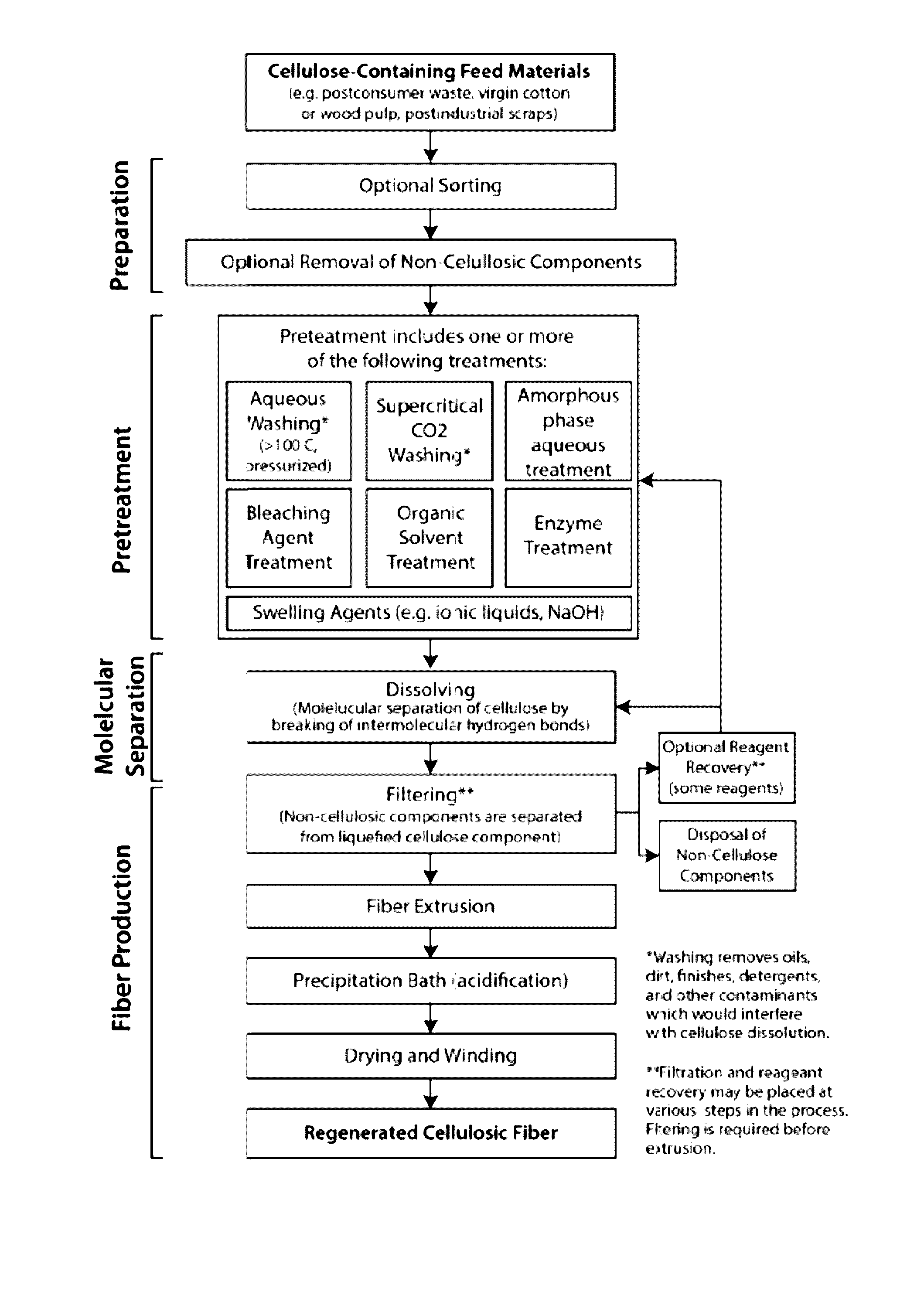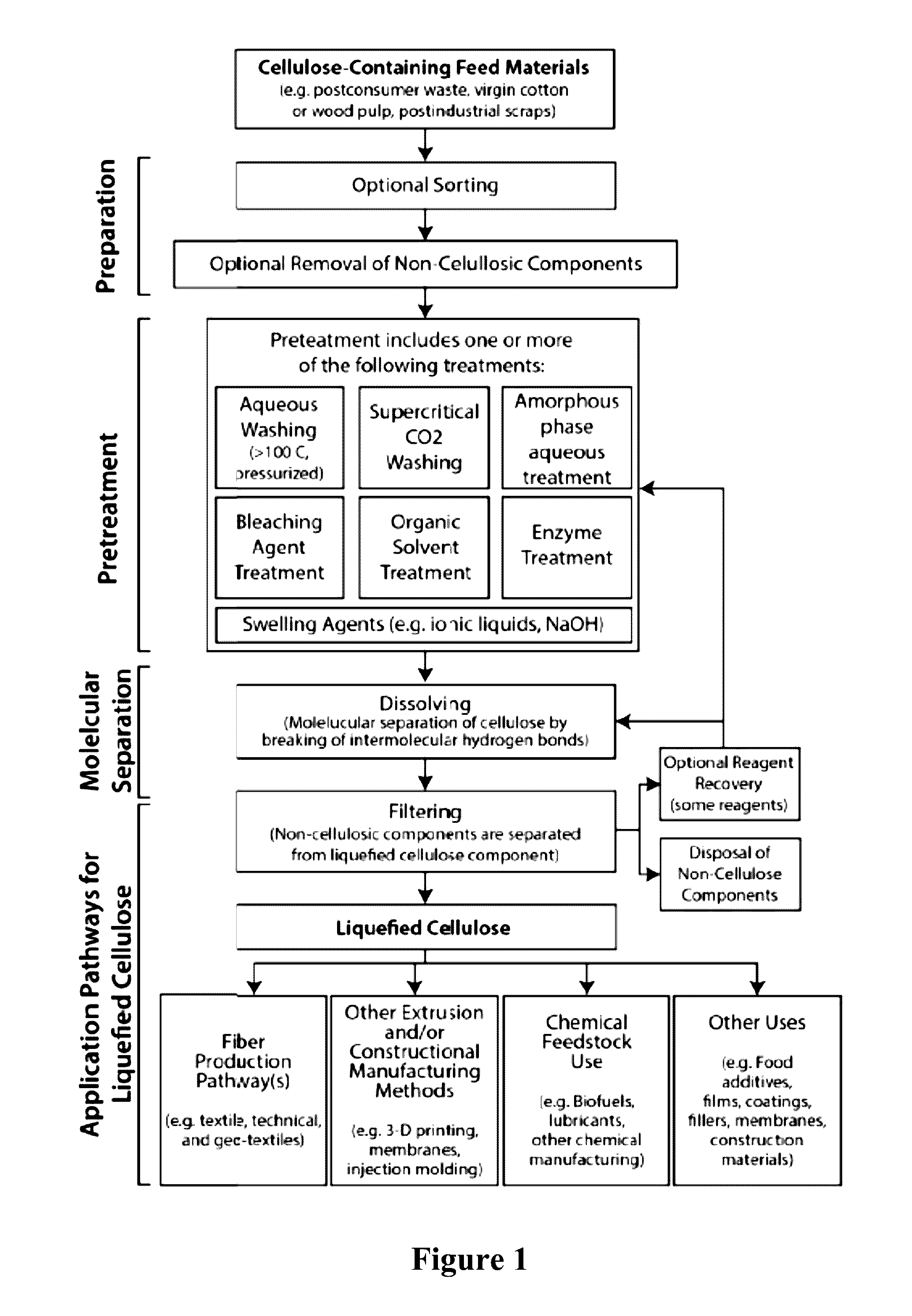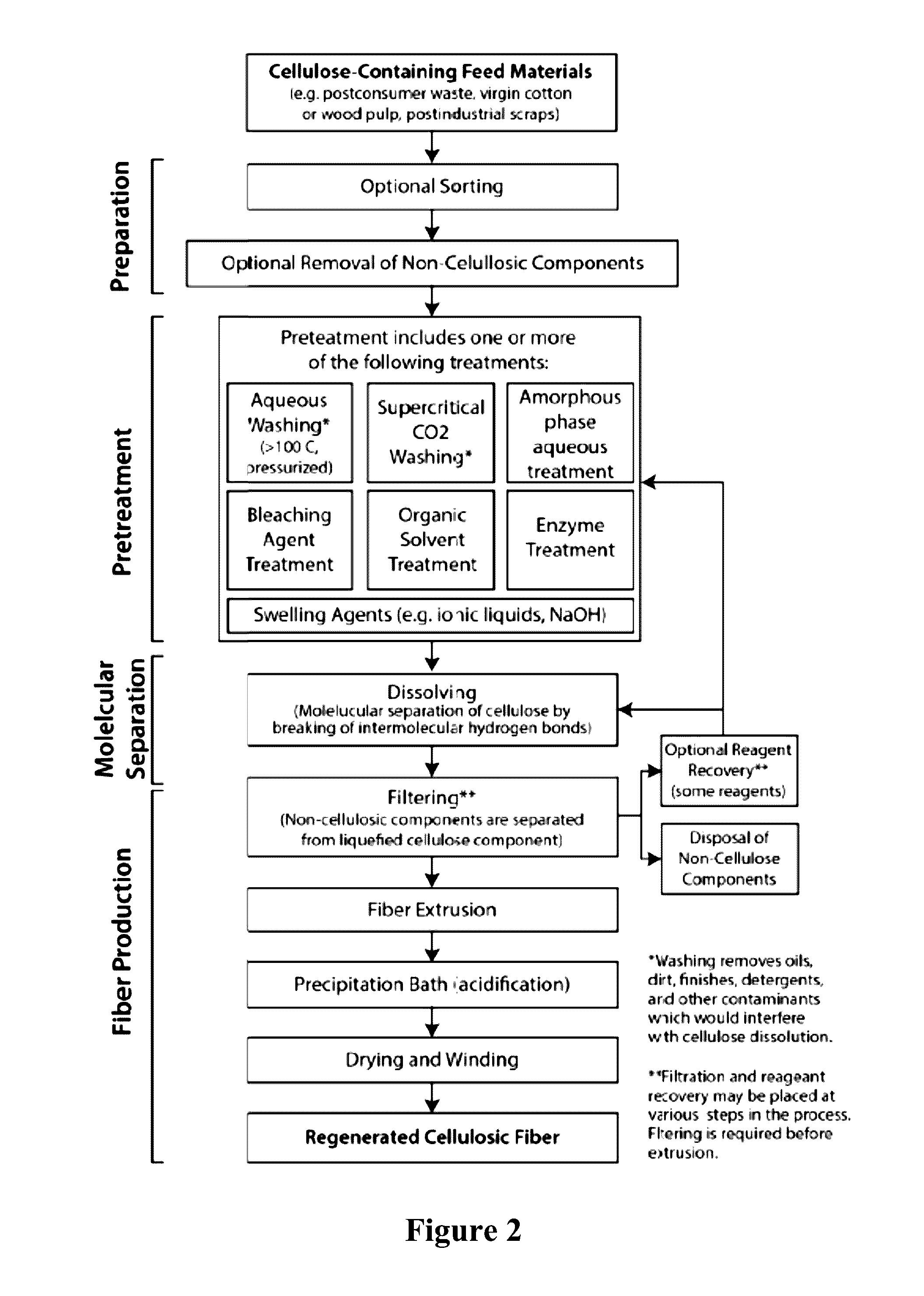Methods and systems for processing cellulose-containing materials and isolating cellulose molecules; methods for regenerating cellulosic fibers
a technology of cellulose and cellulose molecules, applied in the field of cellulose-containing materials processing methods and systems, can solve the problems of exacerbated waste disposal problems, high and variable raw material costs of natural fibers, and resource-intensive growing and harvesting of cotton fibers, and achieve the effect of low environmental impa
- Summary
- Abstract
- Description
- Claims
- Application Information
AI Technical Summary
Benefits of technology
Problems solved by technology
Method used
Image
Examples
example i
[0082]A small scale experiment was conducted to establish feasibility of cellulose pulping and fiber regeneration using shredded cotton garment material as a feedstock. The shredded feedstock material was treated with Schweizer's Reagent to form a dissolved pulping solution, and the pulp solution was acidified by treatment with sulfuric acid. Fibers were regenerated as a result of the acidification.
Chemical Reactions
[0083]1. 2 NaOH(aq)+CuSO4(aq)→Cu(OH)2(s)+Na2SO4(aq)[0084]2. Cu(OH)2(aq) Cu2(aq)+2OH−(aq)[0085]3. n Cu2+(aq)+(cellulose)n+2n OH−→(CuC6H8O5)n+2n H2O[0086]4. Cellulose is actually dissolved in [Cu(NH3)4](OH)2 solution and then regenerated as cotton or rayon when extruded into sulfuric acid.[0087]5. Note: Filtration of Cu(OH)2 can be a problem; small amounts of precipitate should be filtered and then combined in one container.
Process Instructions
[0088]1. Dissolve 25.0 g of CuSO4.5H2O in 100 mL distilled water. Heat the water to accelerate the dissolving process.[0089]2. Diss...
example ii
[0095]Analyses were conducted to compare regenerated cellulosic fibers, processed as described herein, with virgin cotton fibers. Regenerated cellulosic fiber produced as described above was tested using the ASTM D 2256-02 test method for tensile properties of yarns by single-strand method. The regenerated cellulosic fibers exhibited uniform-diameter fiber properties, with the tenacity of cotton and the fineness of silk. Tenacity is a measure of the breaking strength of a fiber divided by the denier. FIG. 9A shows a magnified image of a regenerated cellulosic fiber produced as described above (on the left, labeled Evrnu) and FIG. 9B shows a magnified image of a premium long-staple cotton fiber as tested in Harzallah, Benzina & Drean, 2009 (right-side image, labelled “cotton,” reproduced without permission from aforementioned paper). The comparative fiber properties of the regenerated cellulosic fiber produced as described above and the premium long-staple cotton fiber, as reported i...
PUM
| Property | Measurement | Unit |
|---|---|---|
| pressure | aaaaa | aaaaa |
| temperature | aaaaa | aaaaa |
| temperature | aaaaa | aaaaa |
Abstract
Description
Claims
Application Information
 Login to View More
Login to View More - R&D
- Intellectual Property
- Life Sciences
- Materials
- Tech Scout
- Unparalleled Data Quality
- Higher Quality Content
- 60% Fewer Hallucinations
Browse by: Latest US Patents, China's latest patents, Technical Efficacy Thesaurus, Application Domain, Technology Topic, Popular Technical Reports.
© 2025 PatSnap. All rights reserved.Legal|Privacy policy|Modern Slavery Act Transparency Statement|Sitemap|About US| Contact US: help@patsnap.com



